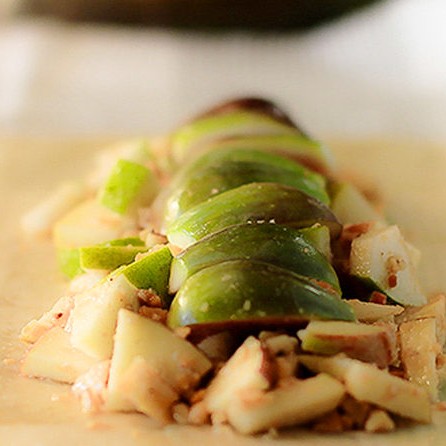
Strudels are perfect during cooler evenings because they really highlight the fruit inside. Strudel is like a rolled up pie – much the same as a calzone is basically a rolled up pizza. Based on an original recipe kindly sent in by Jack McNulty.
The classic recipe, of course, is apple strudel, which is very difficult to beat in terms of overwhelming satisfaction. But if we tinker a bit, adding pears to the recipe can make it a little more interesting.
If you feel even bolder, replace the traditional roasted hazelnuts with walnuts. However you decide to make the filling, make sure to make the dough in the same manner, which is more in the Austrian style.
The addition of vinegar to the dough is very important, if not a bit odd sounding at first. Vinegar will help the formation of a very elastic gluten network, which helps greatly when stretching out this dough to a paper-thin consistency.
Make sure to use mild flavored white wine vinegar in your strudel dough
Jack’s dough recipe is in the comments below.